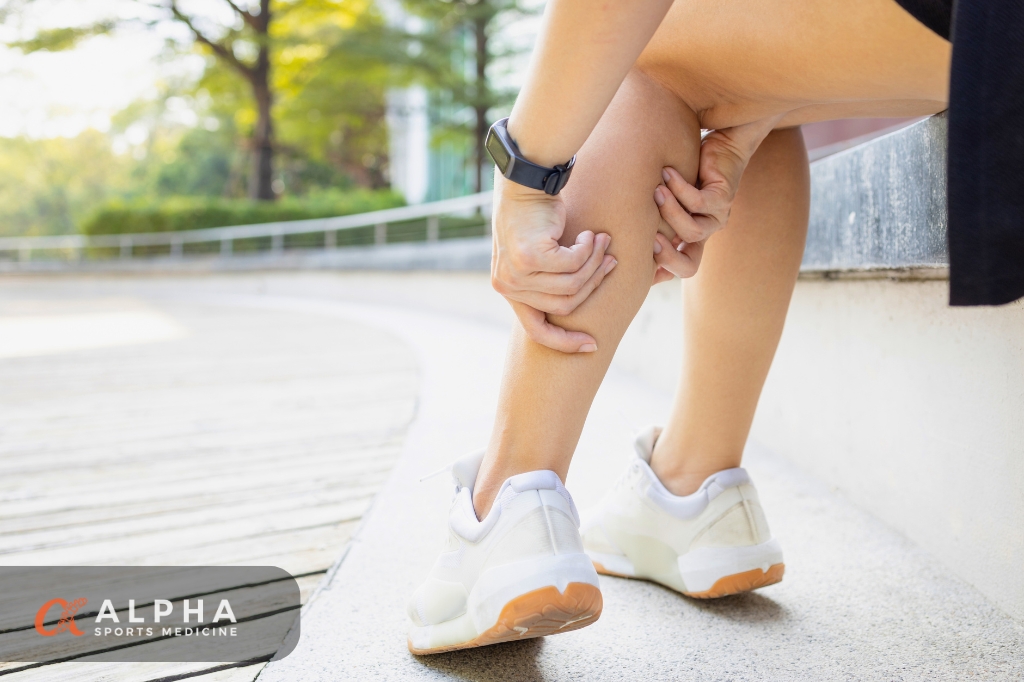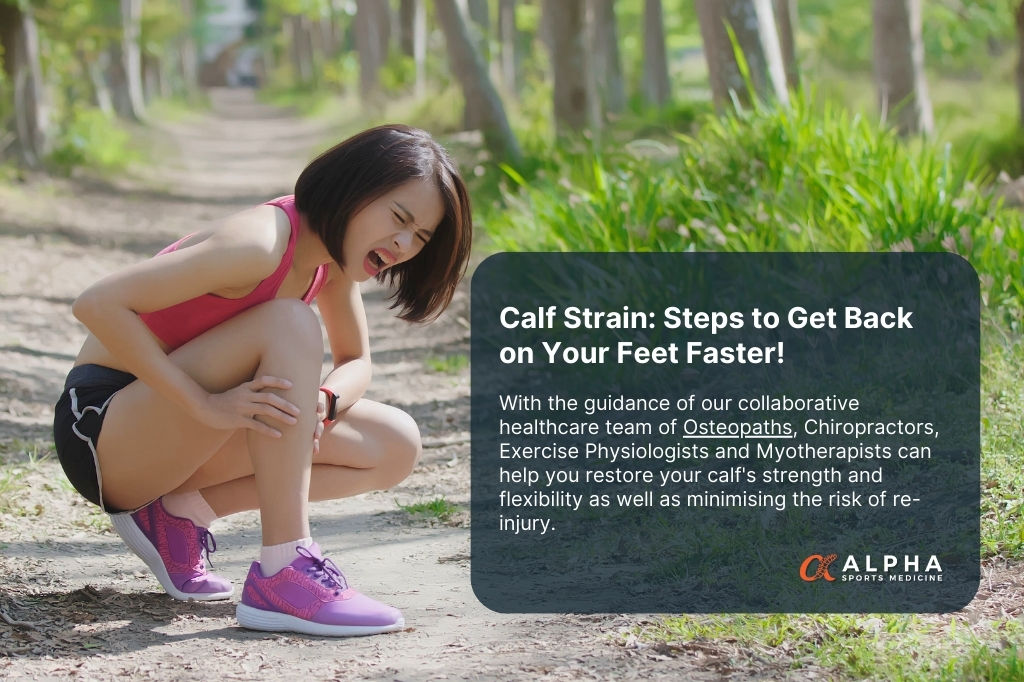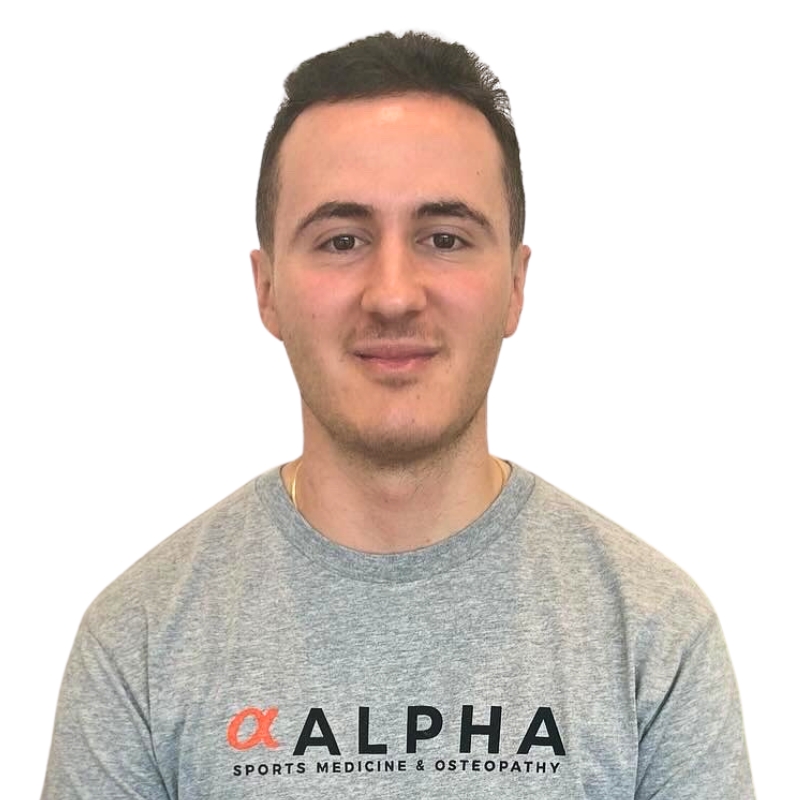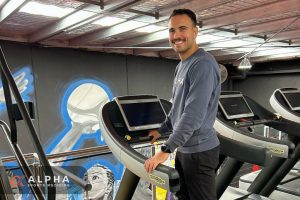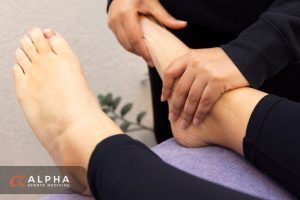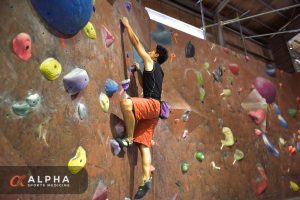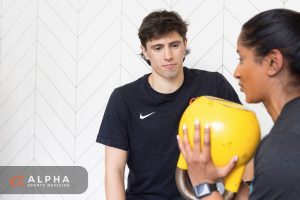Calf strains can be ongoing and irritating injuries, especially when you have no idea when or how they started to become a problem. Why are calf strain injuries so tricky to identify? The calf muscle (two parts of the gastrocnemius, one part soleus) is responsible for producing high forces for the ankle and lower limb.
It’s also responsible for absorbing load when walking or running and performing high ranges of movement across the ankle joint. Unfortunately, the calf muscle receives very poor sensory supply (particularly to the intramuscular aponeurosis), which means the calf doesn’t receive accurate sensory feedback as to what has happened in the muscle and if there is pain. This can result in gradual, slow and insidious onset mechanisms of injury, making it hard to detect when it happened and where in the calf the exact strain location is.
Risk factors of getting a calf strain
- Chronological age – increasing age increases the risk of a calf strain
- Previous muscle injury – if you’ve had a calf strain before, this increases your risk of getting one again
- Other injury history – to the lower limb, including ankle sprains, achilles tendinopathy, plantar fasciitis, knee injuries or hamstring strains.
Common causes of calf injury
- Gradual Onset is the most common mechanism of calf strain injury, having more likelihood of occurring within the soleus muscle, which makes up one-third of the calf.
- High-intensity running is the second most common mechanism of calf strain injury, most likely occurring in the gastrocnemius muscle, which makes up two-thirds of the calf muscle.
- Steady-state running is likely to cause a calf strain if it is a recurrence of a previous injury.
Initial management (immediately-72 hours)
In this phase, we want to focus on compression of the area and rest. Ice can be used for pain relief, but letting the body’s natural inflammatory healing process to begin is ideal.
Massage in the acute stage is likely to cause more bleeding at the strain site and could make the recovery process worse. After 48 hours post-injury, you can make an appointment with your local practitioners.
Our team of Sports Osteopaths and Sports Chiropractors at Alpha Sports Medicine, located in Newport, Ascot Vale and Bacchus Marsh, are experienced in soft tissue injury management and can help diagnose and make a tailored plan for you.
Three exercises to help get you started on your Calf Strain Rehab Journey.
Mobility: Resisted Ankle Plantarflexion
- Sit down on the floor or in a chair with your legs stretched out in front of you. – Take a resistance band and loop it around the ball of your foot (the foot you want to work on).
- Hold the ends of the resistance band with both hands, or if possible, anchor the band to something stable (like a door handle or sturdy object).
- Slowly point your toes downward, as if you’re trying to push the gas pedal in a
- car. Be sure to perform this exercise without causing too much pain or discomfort.
Mobility: Knee to Wall Exercise
- Stand facing a wall with your toes about 10cm away from the wall.
- Keep your feet flat on the floor and your toes pointing straight ahead.
- Slowly bend one knee forward over the toes, aiming to bring it toward the wall, while keeping your heel flat on the floor.
- This should not be a forceful movement and should be performed without causing too much pain or discomfort
Strength: Calf Raises Standing straight knee calf raise holds (isometric)
- Stand up straight with your feet shoulder-width apart, keeping your legs straight (no bending of the knees).
- Place your hands on your hips or hold onto a wall or chair for balance if needed.
- Slowly rise up onto the balls of your feet, lifting your heels off the ground. You should feel your calf muscles working as you elevate your body.
- Keep your knees straight throughout the exercise (don’t bend them).
- Hold this elevated position at the top (up on your toes) for 10-30 seconds, depending on your ability and the challenge you want to give your calves.
- This should be performed with limited discomfort or pain
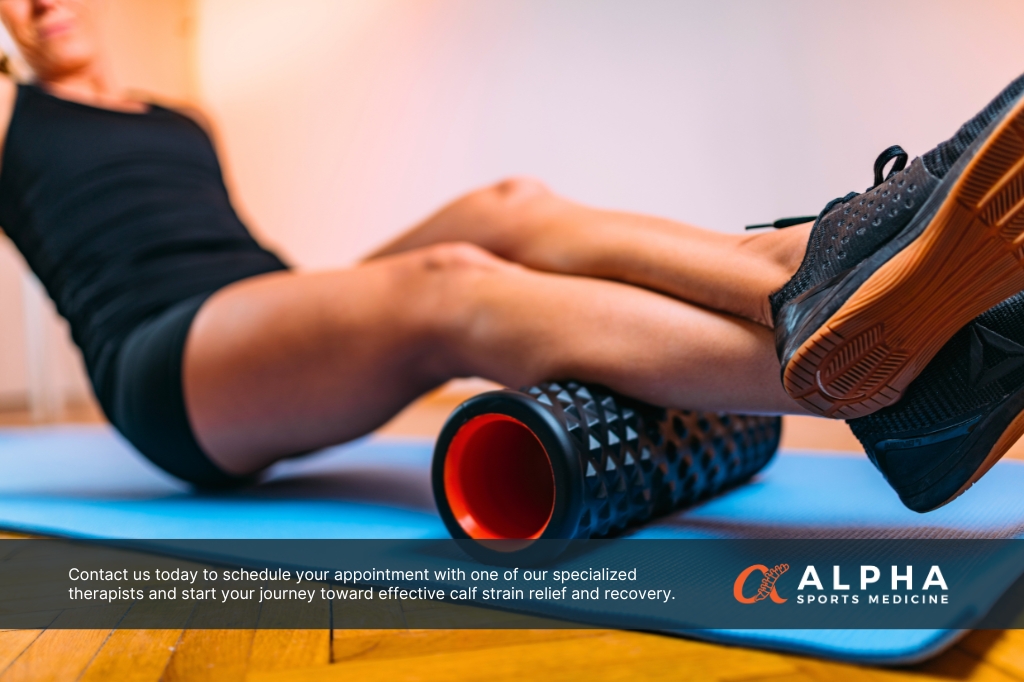
Get Back to Your Best with Alpha Sports Medicine
A calf injury can certainly slow you down, but it doesn’t have to keep you off track for long. At Alpha Sports Medicine, located in Newport, Ascot Vale and Bacchus Marsh, we believe in more than just recovery—we focus on rebuilding you to be stronger and better than before. With the guidance of our collaborative healthcare team of Osteopaths, Chiropractors, Exercise Physiologists and Myotherapists, we can help you restore your calf’s strength and flexibility as well as minimise the risk of re-injury. With the right guidance and treatment, you’ll be back on your feet and performing at your best. Don’t just recover—come back stronger, faster, and more resilient.
Trust Alpha Sports Medicine to turn your setback into a powerful comeback. Your best performance is waiting—let us help you get there!
Author
-

Dr James Camerotto graduated from RMIT with a Bachelor of Health Science and a Bachelor of Applied Science (Osteopathy). He is also a qualified sports trainer and Level 1 ASCA Strength and Conditioning Coach.
View all posts Osteopath and Strength and Conditioning Coach

